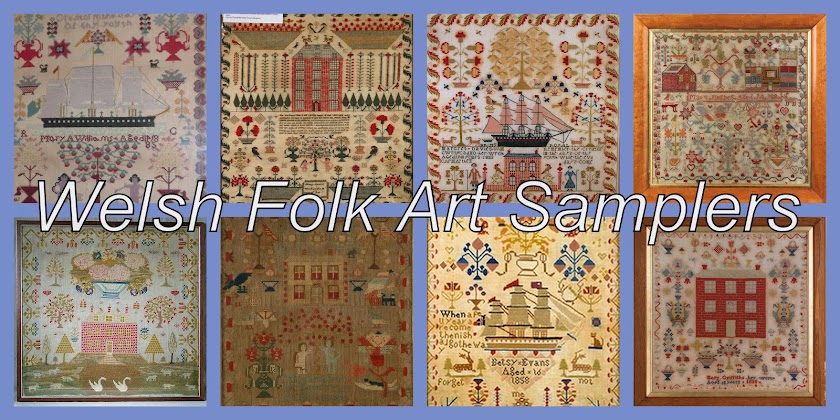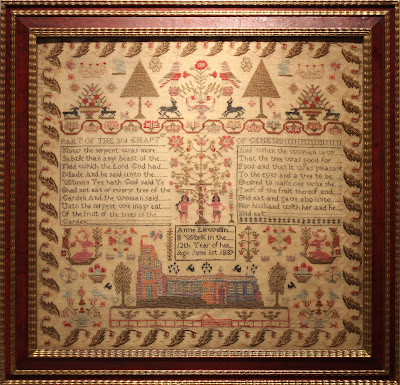Carmarthen, the town and county have already been mentioned quite a few times on this blog and I am fairly sure they will crop up many times in the future. It is an area in South West Wales which has a rich textile history and thousands of samplers were sewn there in the 19th century.
Many of its samplers have a pair of very large birds, sometimes the predominant motif but also accompanied by other major elements. I am not sure where the pattern originated or what sort of birds they are but they are certainly distinctive.
These are some of the samplers - all come from around the town of Carmarthen and there are many links which can be recognised.
I have more of these on file and they will appear when I manage to digitalise the images.
Many of its samplers have a pair of very large birds, sometimes the predominant motif but also accompanied by other major elements. I am not sure where the pattern originated or what sort of birds they are but they are certainly distinctive.
These are some of the samplers - all come from around the town of Carmarthen and there are many links which can be recognised.
I have more of these on file and they will appear when I manage to digitalise the images.
 |
| This one has a border of leaves and acorns, much favoured on Carmarthen samplers. |
 |
| This sampler is very similar to the first without the house, but has a version of the bluebell trees. |




































